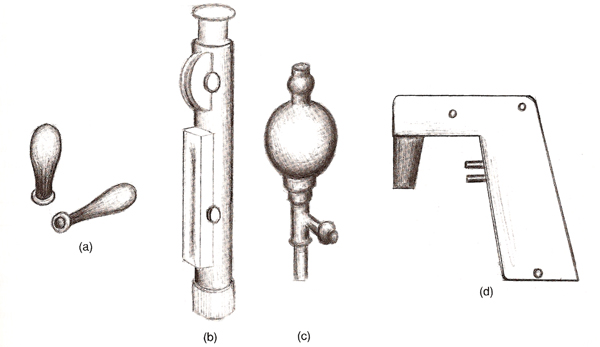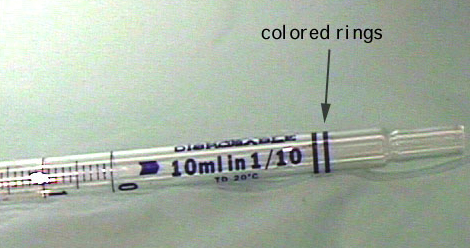This is a serological pipette calibrated so that the tip includes the last milliliter.
The bands at the top indicate that this pipette is to be "blown-out."
Note that this pipette has a scale that extends above zero to expand the calibrated capacity of the pipette. Thus, this is really an 11.0 mL pipette.
The center diagram show how one would measure 3.2 mL using the 'blow-out' technique.
The diagram on the right shows how one could measure 3.2 mL using a point to point technique.
Both techniques equally accurate |





